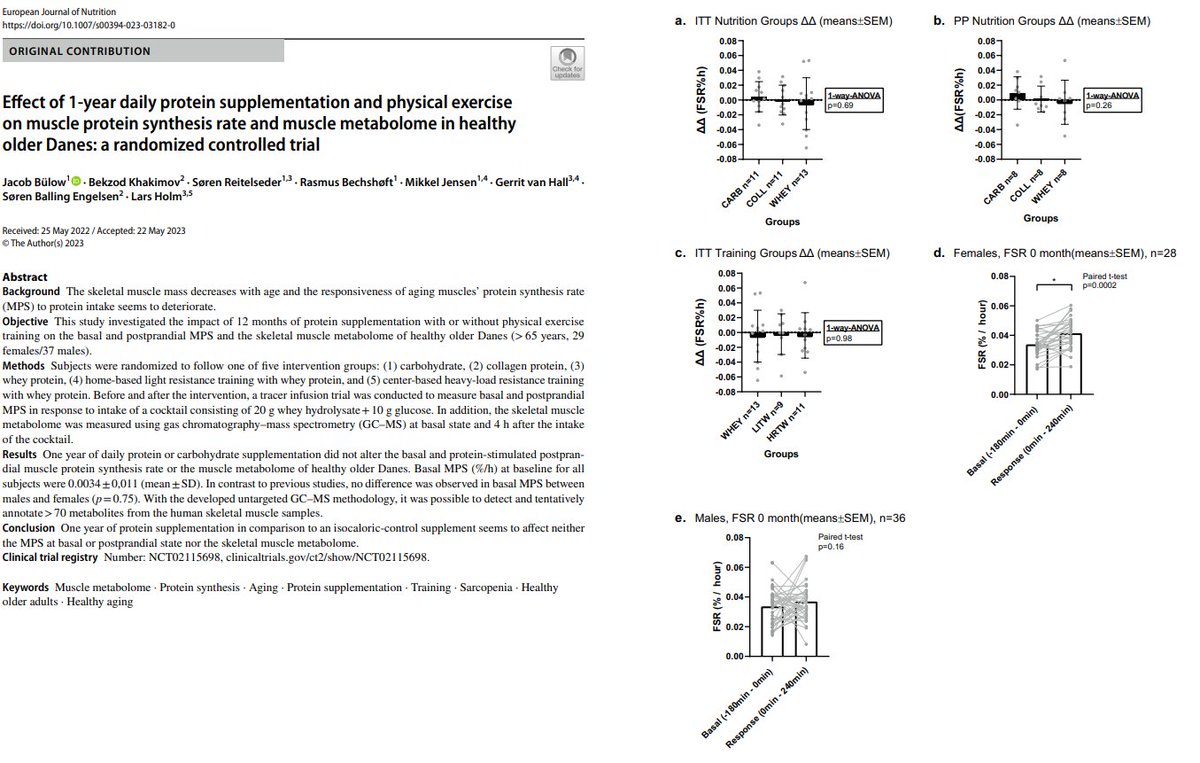Here, one year of protein supplementation in comparison to an isocaloric-control supplement appeared to affect neither the muscle protein synthesis rate at basal or postprandial state nor the skeletal muscle metabolomein healthy older Danes. 

- The skeletal muscle mass decreases with age and the responsiveness of aging muscles protein synthesis rate to protein intake seems to deteriorate.
- This study investigated the impact of 12 months of protein supplementation with or without physical exercise training on the basal and postprandial muscle protein synthesis and the skeletal muscle metabolome of healthy older Danes (> 65 years, 29 females/37 males).
- Subjects were randomized to follow one of five intervention groups:
* Carbohydrate
* Collagen protein
* Whey protein
* Home-based light resistance training with whey protein
* Center-based heavy-load resistance training with whey protein.
* Collagen protein
* Whey protein
* Home-based light resistance training with whey protein
* Center-based heavy-load resistance training with whey protein.
- One year of daily protein or carbohydrate supplementation neither seemed to alter the basal nor the protein-stimulated postprandial muscle protein synthesis rate in healthy older adults.
- In contrast to previous findings, no differences in basal protein synthesis rates between males and females were observed.
Effect of 1-year daily protein supplementation and physical exercise on muscle protein synthesis rate and muscle metabolome in healthy older Danes: a randomized controlled trial (open access)
doi.org/10.1007/s00394…
#nutrition #diet #protein #exercise #muscle #lift #cardio
doi.org/10.1007/s00394…
#nutrition #diet #protein #exercise #muscle #lift #cardio
• • •
Missing some Tweet in this thread? You can try to
force a refresh

 Read on Twitter
Read on Twitter







